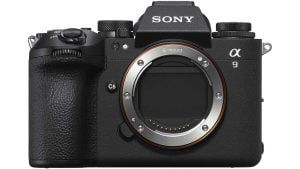

There’s been a lot of fuss made about the Sony A9 III (buy here). Given that it’s the first mirrorless camera to come with a global shutter CMOS sensor, however, that’s not really a surprise. People have been begging for global shutters for years.
It was praised as a great leap in imaging technology. No more rolling shutter, crazy fast continuous shooting and flash sync to any shutter speed. For all of its benefits, though, DPReview seems to have spotted some flaws in the A9 III.
Optimised for speed (and sports)
There is no doubt that the Sony A9 III is an extremely capable camera. It needs to be in order to justify its $6,000 price tag. It shoots 14-Bit RAW stills at up to 120fps with shutter speeds up to 1/80,000th of a second.
It’s optimised primarily for shooting sports, where speed is key. Not just the speed to acquire your subject but to keep up with it, every step of the way. But this speed comes with sacrifices, according to DPReview’s test scene photos.
DPReview comparison of Sony A9 III, A9 II, Nikon Z9 and Sony A6600
The Sony A9 III has a base ISO of 250. This is significantly higher than the Sony A9 II (buy here) base ISO of 100. Nikon’s flagship, the Nikon Z9 (buy here) has a very low base ISO of 64. This means that even its lowest ISO shots should be slightly noisier than the lowest ISO shots from similar levels of camera.
And this is true, but it’s not all that’s true. When the ISO is shifted up so that all the cameras in the comparison match at ISO400, the Sony A9 III still shows a lot of noise, whereas the Sony A9 II and Nikon Z9 are pretty much noise-free. In fact, the Sony A9 III only appears slightly better than the Sony A6600 (buy here) APS-C-sized sensor.
Why is the noise so high?
You’d think with Sony’s latest and greatest sensor tech, the noise levels would be a little lower. However, you have to remember who this cameras is for. While it’s arguably good for things like wildlife, too, it’s primarily geared towards sports and photojournalism.
Here, image quality is not usually the biggest factor. Speed is what’s important. But not just the speed of capture. Many sports photographers and photojournalists aren’t even shooting raw. They’re shooting jpg in order to be able to minimise file sizes for quickly sending out for publication.
Most of these images are then scaled down for the web or they’re being printed. For the web, the noise disappears with the scaling process. With print, the printing process makes the noise differences basically impossible to see. But why is the noise level so high ou tof the camera?
DPReview puts it down to the technology of the sensor itself. Right now, it’s an issue inherent with global shutter sensor tech. The way they work differently to more traditional rolling-shutter CMOS sensors is that each pixel is cut in half, containing two photodiodes.
One initially captures the light, while the other acts as a holding buffer. This allows every pixel in the image to be read simultaneously. They’re then fed out of these buffers and processed into your actual file.
Because each pixel now only captures half the amount of light, the noise increases, even at low ISO levels. This also explains why the lowest ISO is only 250. The reduced incoming light also has a knock-on effect on dynamic range, as the minimum ISO is so high.
Does it matter?
The Sony A9 III is a camera built for a specific type of user with very specific needs. It makes a few sacrifices along the way, but these are sacrifices that many sports photographers and photojournalists will be very happy to deal with.
If the lowest noise possible and maximum dynamic range are most important to you, then the Sony A9 III is not the camera you want. But if speed is important and quality is secondary, it may be your ideal tool.
[via DPReview]







